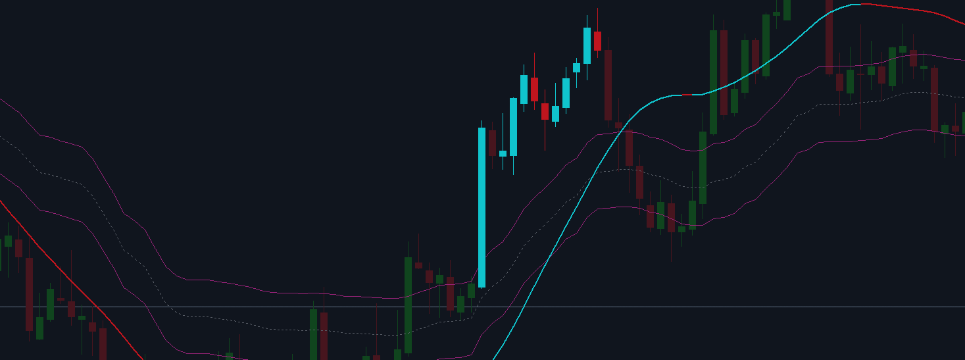Wall Street Crash: Inflation vs. Interest Rate Cut – Prediction – April 12, 2024

U.S. stock markets fell on Wednesday, reaching a minimum closing level following the release of inflation data that exceeded analysts’ expectations. The figures dampened investor optimism that the U.S. Federal Reserve could begin cutting interest rates by the summer.
When the U.S. Department of Labor’s Consumer Price Index (CPI) report, which showed worse-than-expected results, was released, it immediately provoked a negative reaction in the market. Major U.S. stock indices fell sharply into the red as trading began, highlighting the difficulty of returning inflation to the Federal Reserve’s target of 2%.
Ryan Detrick, senior market analyst at the Carson Group, noted that the surprising inflation data is leading to a “sell first, ask questions later” strategy. This raises doubts about not only the timing of the first interest rate cut, but also the scale of future cuts.
Concerns expressed in the minutes of the Fed’s March meeting indicate the possibility of inflation stalling toward its target level, which could necessitate an extension of tight monetary policy beyond the expected period.
U.S. Treasury yields surged while stock indexes faced downward pressure after reporting higher-than-expected consumer price inflation in March. The incident has reduced confidence in how quickly and to what extent the Fed can cut interest rates.
In the foreign exchange market, the U.S. dollar index showed strength following the release of data, and the value of the dollar against the Japanese yen reached its highest level since 1990. Investors are closely watching what measures Japanese authorities will take. Stabilize the yen.
According to a report from the Bureau of Labor Statistics, the consumer price index rose 0.4% last month, mirroring the February trend due to rising gas and housing costs. This results in an annual growth rate of 3.5%, compared to economists’ monthly growth estimates of 0.3% and annual growth rates of 3.4%.
These indicators have significantly changed the mood of traders, sharply lowering expectations that the Federal Reserve will cut interest rates from 62% to 17% in June. Additionally, the likelihood of a July rate cut was lowered from 76% to 41%, according to CME Group’s FedWatch tool.
Michael Hans, Chief Investment Officer at Citizens Private Wealth, emphasizes that the current environment remains uncertain and challenging for the Fed, which has yet to declare victory over inflation.
“The Fed would prefer to rely on additional data to support its confidence in achieving its 2% inflation target,” he said. He said the current situation requires the continuation of a cautious strategy, especially as recent data has led to revised expectations regarding the timing of a potential interest rate cut.
The yield on major U.S. Treasury bonds rose above 4.5%, the highest since last November, putting pressure on stocks. The sectors most sensitive to interest rate changes were particularly affected, with the real estate market recording its biggest one-day decline since June 2022.
Housing stocks recorded their biggest one-day decline since January 23, while the small-cap Russell 2000 index recorded its biggest one-day decline since February 13.
“The sectors most exposed to interest rates, including real estate, homebuilding and small businesses, suffered significant losses today,” Ryan Detrick noted.
The likelihood that the Fed will cut interest rates by 25 basis points in June fell to 16.5% from 56% just before the report, according to CME Group’s FedWatch tool.
The Dow Jones Industrial Average fell 422.16 points, or 1.09%, to 38,461.51. The S&P 500 index fell 49.27 points, or 0.95%, to 5,160.64, while the Nasdaq index fell 136.28 points, or 0.84%, to 16,170.36.
Of the 11 major sectors in the S&P 500 index, all but energy ended trading in the red, with real estate posting the biggest decline.
Investors’ attention now turns to the producer prices report due to be released on Thursday. The report will provide a clearer picture of March inflation and the unofficial start to quarterly earnings season.
A new reporting round begins on Friday, when financial giants such as JPMorgan Chase & Co, Citigroup Inc and Wells Fargo & Co report their financial results.
According to LSEG, analysts expect overall first-quarter earnings for the S&P 500 to rise 5.0% year-over-year. This is a significant decline from the 7.2% growth forecast in early January.
Most growth sector giants were down, but Nvidia Inc was the exception, up 2.0%.
Alibaba’s U.S. shares also rose 2.2% after the company’s co-founder Jack Ma sent a memo to employees endorsing the company’s restructuring plan. It’s a rare message from a businessman who has been out of the public eye in recent years.
On the New York Stock Exchange (NYSE), declining stocks far outnumbered advancing stocks by a ratio of 5.93 to 1. A similar trend was seen on the Nasdaq, with 3.58 shares falling for each gainer.
The MSCI Global Stock Index fell 6.91 points, or 0.89%, to 772.32.
The European STOXX 600 index closed slightly higher by 0.15%, but investors’ attention is focused on the upcoming European Central Bank (ECB) meeting on Thursday. Forecasts suggest the bank is likely to keep interest rates unchanged despite early hints of a possible rate cut in June.
In the government bond sector, the US 10-year Treasury yield exceeded 10 basis points, the highest since mid-November following the announcement of inflation. The yield on 10-year US Treasury bonds rose 18 basis points to 4.546%, and the yield on 30-year US Treasury bonds rose 12.8 basis points to 4.6273%.
The two-year yield, which is closely linked to interest rate expectations, rose 22.2 basis points to 4.9688%, hitting its highest level since mid-November.
In the foreign exchange market, the US dollar showed strength, rising 1.04% to $105.17, while the euro fell 1.04% to $1.0742. Against the Japanese yen, the US dollar was traded at 152.94, up 0.77%.
Oil prices also rose, with U.S. crude oil rising 1.15% (98 cents) to $86.21 per barrel, and Brent crude oil rising 1.19% ($1.06) to $90. $0.48 per barrel.
The value of gold fell after the inflation data was updated as the dollar strengthened and Treasury yields rose. Spot gold prices fell 0.91% to $2,331.12 per ounce, while U.S. gold futures fell 0.58% to $2,329.90 per ounce.



